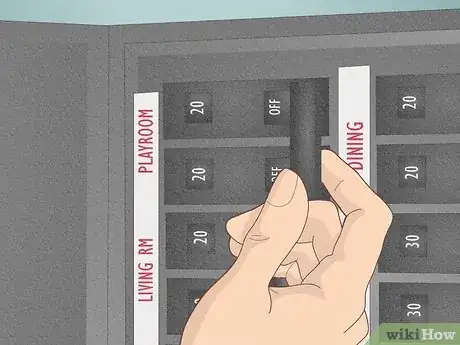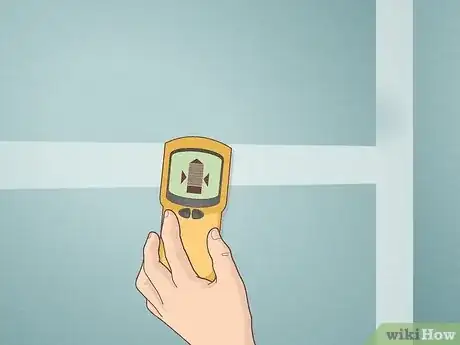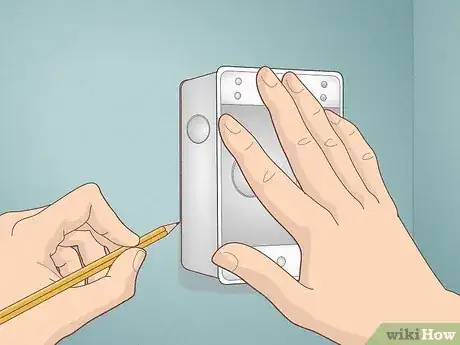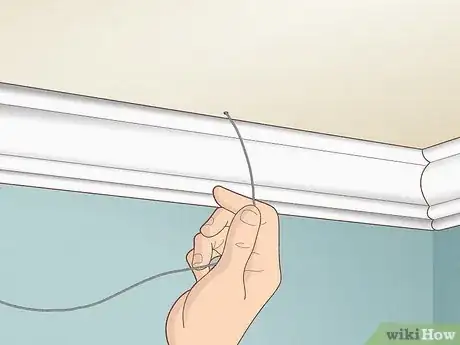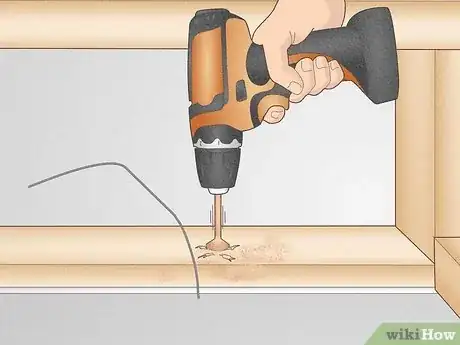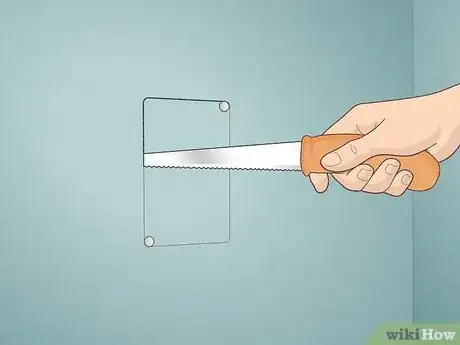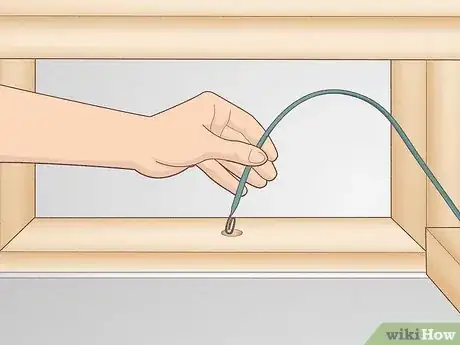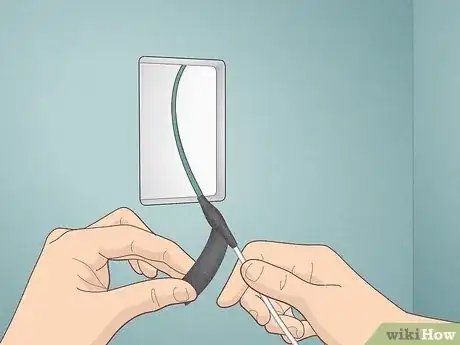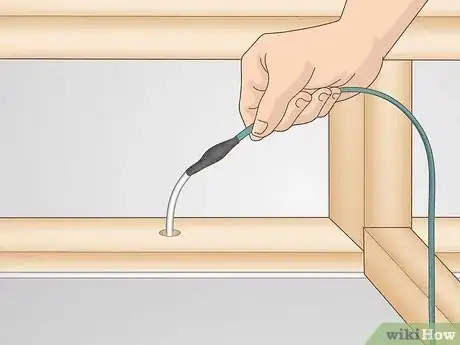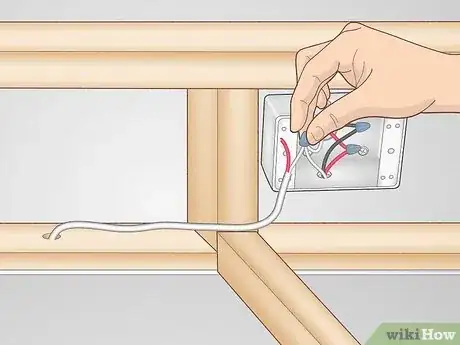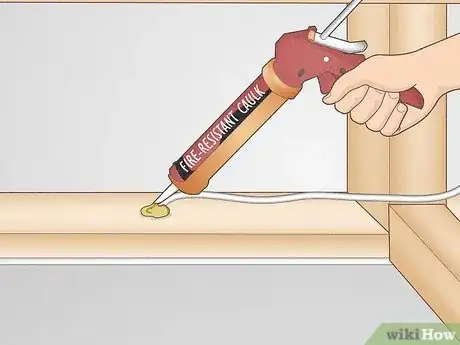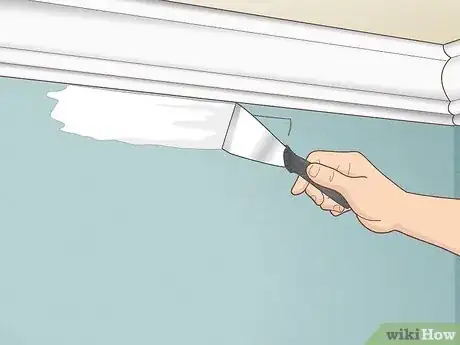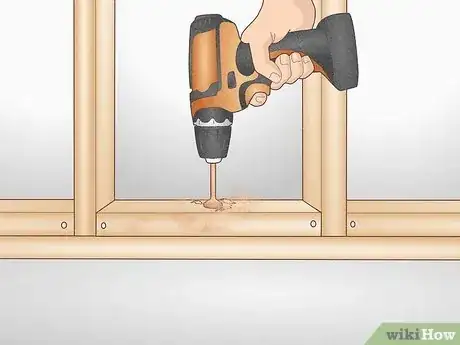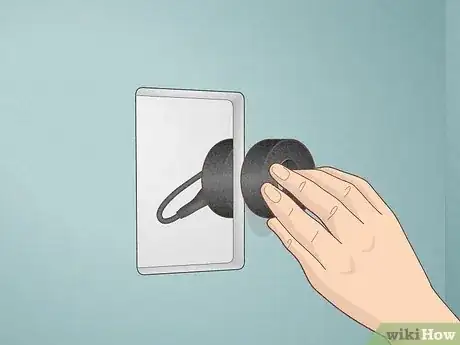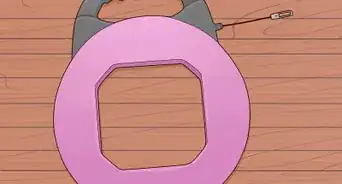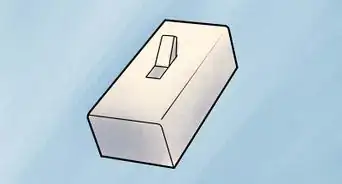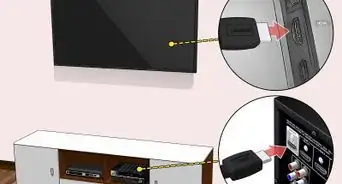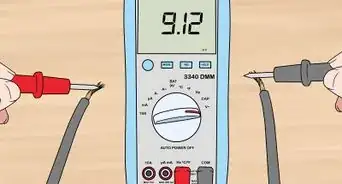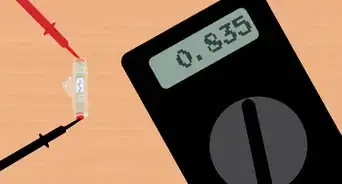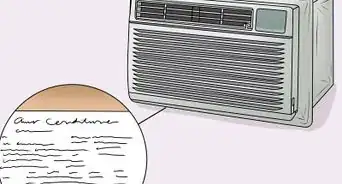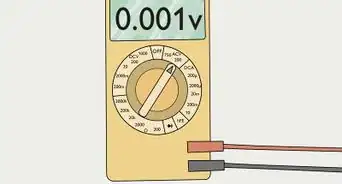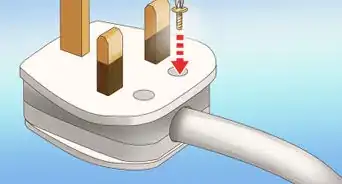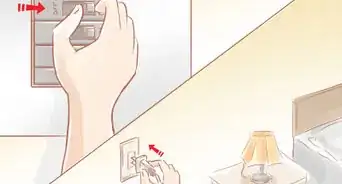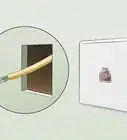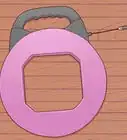This article was co-authored by Jesse Kuhlman and by wikiHow staff writer, Hunter Rising. Jesse Kuhlman is a Master Electrician and the Owner of Kuhlman Electrician Services based in Massachusetts. Jesse specializes in all aspects of home/residential wiring, troubleshooting, generator installation, and WiFi thermostats. Jesse is also the author of four eBooks on home wiring including "Residential Electrical Troubleshooting" which covers basic electrical troubleshooting in residential homes.
There are 15 references cited in this article, which can be found at the bottom of the page.
This article has been viewed 398,889 times.
If you’re extending a circuit to add a new outlet or switch, fishing wires through your walls will help keep them out of sight and up to code. While running wires behind a finished wall might seem tricky, it's actually pretty simple with the right tools. Keep reading to learn everything you need to know about safely guiding the cables through your walls and finishing your DIY project.
Things You Should Know
- Check your local electric and building codes to see what type of wiring you can do. Turn off the power to work safely.
- Run the wires in between the studs in your wall. Use a stud finder to check for any obstructions.
- Cut a hole in your wall with a drywall saw. Make another hole in the top or bottom plate of the wall with a drill.
- Secure the wires to a fish tape using electrical tape. Slowly pull the fish tape and wires through the wall.
Steps
Cutting Openings in the Wall
-
1Shut off power to the area at the circuit breaker. Shut off the electricity at the main breaker to any circuit that you’re modifying or that’s in the area where you’re running. Use a multimeter or a current tester on the closest outlet where you plan on connecting the wires to make sure it doesn’t have any current running through it. That way, there’s no risk of getting shocked while you’re running and connecting the wires.[1]
- Important Note: Contact your local government’s municipal department to check the electrical code for your area for any wiring restrictions. You’re usually allowed to run low-voltage wires like network cables, speaker wires, and phone lines, but you may be required to hire a professional for high-voltage installations.[2]
- Try to work during the day so there's natural light. If there's enough natural light, turn off the breaker’s main circuit so there's no power on at all. If you can't work during the day or there's not enough natural light, make sure you have a flashlight so you can see what you’re doing.
-
2Check for studs and building materials in the wall with a stud finder. Studs and other obstacles behind your wall block cables from running, so you want to avoid them. Run the stud finder across the wall to check for studs in the area where you want the new electrical box. If you hear it beep, that may mean there’s a stud, ductwork, or a horizontal fire block behind the drywall.[3]
- You can also refer to the blueprints of the space if you have them.
- If you’re trying to find a stud in a plaster wall, try knocking on the wall and listening for a solid thunk sound. If you hear a hollow echo, then there isn’t a stud.
- Try to avoid running wires through exterior walls since they typically contain braces and insulation that are difficult to work around.
Advertisement -
3Trace the electrical box onto your wall. Hold the electrical box you’re installing against the drywall. Use a level to make sure the electrical box isn’t crooked. Then, trace the box’s outline onto the wall to get its exact dimensions.[4]
-
4Stick a wire through the ceiling or floor in line with the electrical box. Find a spot where the wall meets the ceiling right above where you want to run your wires. Use a drill with a 1⁄8 in (0.32 cm) drill bit to make a discreet hole completely through your ceiling or floor. Thread a length of wire or a pipe cleaner about 2 feet (61 cm) into the hole.[5]
- The wire makes the hole you drilled easier to see so you know exactly where you need to fish the cables.
- You only need to do this if you plan on running wires horizontally through your attic, basement, or crawl space. If you’re hiding a mounted TV’s wires, you only need to run the wires to another electrical box a short distance up your wall.
-
5Find the wall plate in the attic or basement next to the wire. Wall plates are the long horizontal boards at the top and bottom of the wall’s framing. Go into your attic, basement, or crawl space and look for the wire sticking through the hole. In an unfinished area, you’ll see the wall plate right next to the hole.[6]
- If you have a finished space above or below the area where you’re running wires, you may need to cut access into your floor or ceiling. Otherwise, you can use some of the alternative methods to run wires mentioned later on.
-
6Cut through the top or bottom wall plate with spade bit. Install a 3⁄4 in (1.9 cm) spade bit onto your drill. Position the hole in the middle of the wall plate so it lines up with the hole you drilled. Slowly push the drill until it goes completely through the wall plate.[7]
- Keep the hole at least 1 1⁄4 inches (3.2 cm) from the edge of the wall plate to follow building and electrical codes.
- If you're working in a tight crawl space, you can use a flex drill bit to make the hole from several feet away.
- Shine a flashlight into the hole you just made to double-check for any obstructions behind the drywall.
-
7Cut a hole for your electrical box with a drywall saw. Return to the main floor where you’re installing the new electrical box. Start by drilling two holes in opposite corners of the outline you drew. Slowly cut the drywall along the outline with your saw. Once you cut out the section completely, carefully pull it out from your wall.[8]
- If you’re cutting a hole that you’ll need to patch later, cut at an inward slant. That way, you’ll be able to fit the piece back in without it falling through the hole.
Running Wires inside Your Walls
-
1Feed a fish tape through the wall plate to the hole in the wall. A fish tape is a long metal line with a hook on the end to guide cables through a wall. Uncoil the fish tape and slowly feed the hooked end into the hole in the drywall. Gently push it through your wall until it reaches the hole you drilled in the wall plate.[9]
- Ask a helper to look for the end of the fish tape at the other end. They might be able to see it as you feed it into the wall and help guide you in the right direction.
-
2Secure the wires to the end of the fish tape with electrical tape. Overlap 6 inches (15 cm) of the wire with the end of the fish tape. Starting from the end of the fish tape, wrap the electrical tape around the two so they’re bound tightly together. Make sure the tape is smooth so the cable can slide past obstacles and the holes you drilled without getting caught.[10]
- Keep the end of the wire completely wrapped so there’s less risk of tearing the insulation.
-
3Pull the fish tape and wires slowly through your wall. Gently pull the fish tape from the hole for the electrical box to guide the wire through the wall. Move slowly to avoid snagging the cable or damaging it due to kinks or friction. Pull out about 1–2 feet (30–61 cm) of wire through the hole in the wall. Then unwrap the tape to disconnect the wires.[11]
- It may help if you have someone on the other side of the wall who can pull back on the wire if it gets snagged on anything.[12]
- Alternatively, tie a metal nut to a string and lower it through the hole from above. Once the string reaches the hole below, tie the cable and string together so you can pull it back up.
-
4Run the wires to where you want to connect them. You may run the wire into another wall cavity with an outlet you’re connecting to or to another electrical box for TV wires. If you need to cut out any additional holes, just drill through the wall plate and cut a hole in the drywall with your saw. Strip the ends of the wires if you need to and connect them to the appliances or receptacles.[13]
- Once the wires are connected, turn your power back on and test that the connection works properly.
-
5Seal holes in the wall plates with fire-resistant caulk. If there was a fire, holes left from wiring through a wall plate could make the flames spread rapidly between the floors of your home. Spread the caulk around the opening of the holes and let it dry completely so it makes a fire-safe seal.[14]
-
6Repair any drywall or wall finish that you had to remove. If there are any holes left in your drywall, fill them with a spackle and let them dry completely. After that, you can sand and paint the surface to blend it with the rest of your wall.[15]
Troubleshooting Common Issues
-
1Drill through horizontal fire blocks if you run into them. Fire blocks are horizontal wooden braces between studs that slow down the spread of flames. While it’s best to avoid wall cavities with fire blocks, you have a few options for getting through them:[16]
- Use a flex drill bit to reach the fire block from the hole in your wall.
- Cut through the drywall at the fire block. Then, either drill a hole through the center or use a chisel to carve out a 3⁄4 in × 1 in (1.9 cm × 2.5 cm) notch.[17] Cover the notch with a metal nail plate to protect the cable.
-
2Use a magnet pull to guide the wire through insulation and around corners. Tie the magnet pull to the end of the fish tape before you feed it into your wall. Hold a strong magnet against your wall until it catches onto the magnet pull. Slowly drag the magnet against your wall to move the magnet pull and wires through your walls and toward the opening in your wall.[18]
- Magnet pulls may not work properly if the wall cavity has ductwork or pipes since the magnet may be attracted to them.
-
3Run wires through studs horizontally if you don’t have above or below access. If you can’t get into your basement or attic, cut out a large panel of drywall where you want to run the wires. Use a 1 in (2.5 cm) spade bit on your drill to cut through the middle of the studs at least 1 1⁄4 inches (3.2 cm) in from the edge. Run your wires through the holes in the studs to reach where you need to.[19]
- Cover the edges of the boards with metal nail plates where the wires run through them so they don’t get damaged.
-
4Consider running wires above plaster and lath walls. Old plaster tends to break off the wooden lath easily, which makes installation much more difficult. Rather than cutting into the walls, try using wire concealers along the baseboards to hide the cables.[20] If you’re set on running the wires through your wall, be prepared to repair the plaster after installation.
Expert Q&A
Did you know you can get premium answers for this article?
Unlock premium answers by supporting wikiHow
-
QuestionWhat's the trickiest part of fishing wires through walls?
 Jesse KuhlmanJesse Kuhlman is a Master Electrician and the Owner of Kuhlman Electrician Services based in Massachusetts. Jesse specializes in all aspects of home/residential wiring, troubleshooting, generator installation, and WiFi thermostats. Jesse is also the author of four eBooks on home wiring including "Residential Electrical Troubleshooting" which covers basic electrical troubleshooting in residential homes.
Jesse KuhlmanJesse Kuhlman is a Master Electrician and the Owner of Kuhlman Electrician Services based in Massachusetts. Jesse specializes in all aspects of home/residential wiring, troubleshooting, generator installation, and WiFi thermostats. Jesse is also the author of four eBooks on home wiring including "Residential Electrical Troubleshooting" which covers basic electrical troubleshooting in residential homes.
Master Electrician The trickiest part is when you run into something blocking the wires that you wouldn't expect to be there. Every time you hit a blockage, you need to either drill through it or cut a notch into it, depending on what you're trying to do. Also, it's really hard to do it alone, because you really need someone on the other end.
The trickiest part is when you run into something blocking the wires that you wouldn't expect to be there. Every time you hit a blockage, you need to either drill through it or cut a notch into it, depending on what you're trying to do. Also, it's really hard to do it alone, because you really need someone on the other end.
Warnings
- If at any point you don’t feel comfortable working on your home’s wiring, contact an electrician to run and fish the wires for you.⧼thumbs_response⧽
Things You’ll Need
References
- ↑ https://www.bobvila.com/articles/how-to-wire-an-outlet/
- ↑ https://todayshomeowner.com/how-to-run-wires-in-existing-walls-and-floors/
- ↑ https://youtu.be/O95FJuzHaxQ?t=230
- ↑ https://www.bobvila.com/articles/how-to-wire-an-outlet/
- ↑ https://youtu.be/mM7LfOb9otc?t=114
- ↑ https://youtu.be/mM7LfOb9otc?t=178
- ↑ https://youtu.be/mM7LfOb9otc?t=267
- ↑ https://youtu.be/R5XePwAO4m0?t=214
- ↑ https://www.thisoldhouse.com/electrical/21014950/hiding-speaker-wires
- ↑ https://youtu.be/O95FJuzHaxQ?t=800
- ↑ https://youtu.be/O95FJuzHaxQ?t=1028
- ↑ Jesse Kuhlman. Master Electrician. Expert Interview. 29 April 2020.
- ↑ https://todayshomeowner.com/how-to-run-wires-in-existing-walls-and-floors/
- ↑ https://www.thisoldhouse.com/electrical/21014950/hiding-speaker-wires
- ↑ https://todayshomeowner.com/how-to-run-wires-in-existing-walls-and-floors/
- ↑ https://youtu.be/R5XePwAO4m0?t=461
- ↑ Jesse Kuhlman. Master Electrician. Expert Interview. 29 April 2020.
- ↑ https://youtu.be/R5XePwAO4m0?t=572
- ↑ https://youtu.be/HTrsF20jA80?t=46
- ↑ https://www.bobvila.com/articles/lath-and-plaster/
About This Article
One trick that makes fishing wire through walls easier is to tape a powerful magnet, like a rare earth magnet, on to the cable. Once the magnet is attached with a bit of tape, stick it and the cable through the lower opening. At the other opening, tie an iron nail or a similarly sized metal object to a fish tape and lower it down through the hole in the wall. Keep lowering the fish tape until the nail connects to the magnet stuck on the wire. Head back to the opening where the wire was sitting and remove the magnet and the nail, then tie the fish tape to the wire. All that’s left is to retract the fish tape to thread your wire through! For more tips from our Electrician co-author, like how to safely prep the area so you don’t get electrocuted, read on!
